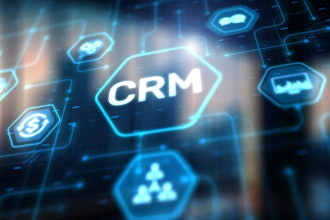
Due to an increasing focus on risk management, major corporations are paying more attention to the environmental health and safety impacts of their supply chain. Some consumers are also paying increased attention to the environmental impact of their purchasing decisions, and are cognizant of how asset management decisions of major institutions impact their community.
Globally, health and safety regulations have become more stringent. The bottom line is that asset-intensive businesses must prioritize compliance with these customer and government requirements while still maintaining efficient and sustainable operations.
EAM is more than a glorified maintenance management system. Often associated with just the efficient management of asset maintenance, EAM has come into its own as a tool for managing the risk profile of capital assets, boosting employee health and safety, and protecting the environment.
Here are four areas where EAM software can benefit businesses and help them to stay safe, compliant, environmentally-friendly and successful.
A More Responsible Asset Lifecycle
EAM software should not only address day-to-day operations and maintenance, it should enable optimization of the entire asset lifecycle to minimize total cost and environmental impact, while maximizing return on capital and productivity. And constructing new assets is seldom as conservative a use of resources as extending the lifecycle of existing assets.
EAM must therefore address the entire asset lifecycle, from project management of design and construction, through years of maintenance, through to decommissioning. The cost and work of contractors must be included through vendor portals, ensuring that cost is captured and any alterations to the specifications of the asset are recorded.
This as-designed, as-built and as-maintained view of the asset will enable a more nuanced approach to decisions about lifecycle extensions versus replacement. It will also reduce the risk of adding capacity to or updating an existing asset because comprehensive data is reliably kept in EAM. This is why standards like ISO 55000 require all data about an asset be contained in a single database over the entire lifecycle of the asset, and why many investors and utility ratepayer groups want asset owners to adopt this comprehensive standard.
Environmental and Compliance Challenges
While government regulation is experiencing volatility in the Americas, major corporations are still placing environmental mandates on their trading partners through green supply chain requirements. Companies like Walmart, IBM, P&G and Pepsico, along with federal governments, major institutions and even middle market companies, have started asking their suppliers to reduce their environmental footprints as a way to burnish their own green credentials.
One thing is for sure: Meeting customer and regulator demands for information on an environmental footprint is daunting. Enterprise software products used in manufacturing may capture the environmental footprint by recording impacts of component parts off of the bill of materials and rolling them up into the impact of a finished assembly.
This may be particularly useful in compliance initiatives where chemical composition of a product is subject to regulation, like material safety data sheet requirements, or where customers want to ensure various substances are not contained in products they sell. EAM should be able to document the use of best practices, record the location where an inspection occurs, and log inspection reports or materials testing results that include information on the personnel performing these tasks for human resources applications.
While sustainability is a growing concern for organizations, compliance is absolute. In industries such as food and beverage, the penalty for non-compliance can be severe - just one slip through the net could seriously harm consumers and businesses.
Skill-based workforce scheduling is critical in putting the right person with the right skills on the right job in order to remain compliant. EAM that has demand planning and scheduling, along with human resource management capabilities, can ensure employees with the correct certifications are available. This integration can ensure critical maintenance processes and audits can be completed without causing delays.
Embracing Field Service Management
Many asset-intensive organizations service assets that are housed remotely, sometimes at customer sites. In the utilities industry, for example, operations, maintenance and service contractors are often responsible for uptime of distributed assets ranging from meters to sewers to electrical distribution assets. The failure and resulting downtime of any of these assets carry financial penalties and damage stakeholder perceptions. The ability to ensure the right technician is on site with the right parts is critical.
One Texas-based oilfield services company involved with the preparation, assembly and operation of components for client drilling installations found that software used to optimize maintenance in the field reduced their carbon footprint. Since using real-time scheduling optimization software for its asset management workforce, the company has saved nearly $3 million in fuel costs alone. The result has been a huge reduction in the company’s carbon footprint.
The impact of EAM spreads further than simply boosting the bottom line. EAM shouldn’t exist in its own ‘bubble’ and apply only to operational assets. With the capabilities of assets constantly changing and new technologies dramatically enhancing the power of data processing, enterprises need to have access to an EAM system which provides a holistic, 360-degree view of all assets - from design, right through to installation and operations.
The chain reaction will spread further than the assets themselves. Companies in all industries can pass these benefits on to their employees, customers and even the environment by making operations safer, smarter and eco-friendly.
Patrick Zirnhelt is responsible for IFS’s presence in enterprise asset management (EAM) software in North America. He has more than 22 years of experience working with enterprise systems, which includes software development, implementation and sales. He holds an MBA specializing in management information systems from the York University Schulich School of Business in Toronto and a bachelor of science degree in mechanical engineering from Queens University, Kingston, Ontario.























